- Home
- Diane Fanning
Under Cover of the Night Page 2
Under Cover of the Night Read online
Page 2
• • •
Gary Babb, the sergeant in charge of investigations for the Bedford County Sheriff’s Department, had stopped by his home in the small city of Bedford for lunch when he received a call from the dispatcher requesting that he respond to a DOA in Forest, approximately twenty-two miles away. He grabbed the rest of his sandwich and went out the door.
He took Route 221 toward Lynchburg, then traveled down roads that twisted and turned under canopies of tall trees and past pastures of cows and fields lying fallow for winter until he reached the small suburban development where the body had been discovered.
A lot of civilians sat in cars or milled in the street in front of the house in question. As he walked from his car, they stared at him with expressions of naked longing that blended an unsustainable mixture of hope, hopelessness, and denial.
The outside of the house appeared ordinary enough with white vinyl siding and a large bay window, enhanced by a stunning stone chimney and foundation. A tall weathered wood fence surrounded the backyard. Uniformed officer Robbie Nash stood on the porch in front of the open front door, guarding the scene. Jones stepped out onto the porch upon the detective’s arrival, and the two deputies explained what they’d found inside of the home and the futile efforts of the rescue squad.
“Did you find a suicide note?” Detective Babb asked.
Both officers shook their heads and said, “No, sir.”
Stepping across the threshold, Babb noted that the deceased thirty-eight-year-old woman was five feet six inches tall, of medium build, with hazel eyes and light brown hair with dark blond highlights. She was lying on her back, wearing jeans, brown shoes, and a car coat. One step inside, he noticed that despite the open door and the winter air slipping through it, an uncomfortable heat filled the home. The smell of death and blood had dissipated to some degree, though, leaving only traces of the ominous odor.
Between the front door and the body, Babb spotted a sheet of paper facedown on the floor, appearing to be insignificant household clutter. But it bore four creases, as if it had once been folded into quarters, and that piqued the detective’s interest. He pulled on a pair of gloves and flipped the paper over. On the reverse side, he read:
Mom, I just can’t take it anymore. I’ve tried so hard to be strong but I just can’t continue. The ups and downs are too much to deal with. I keep trying to appear as though I am doing fine but the days are so overwhelming and lonely. My new love will never leave the family. Wes has buried us in debt and starting over is too much. I am so sorry mom. I am so sorry everyone.
Babb was immediately suspicious of the note. To begin with, it was typed and did not bear a signature—unusual for the last words of someone about to commit suicide. In addition, the tone of the message was more impersonal than other final messages he’d read in the past, and it raised more questions than it answered. Nevertheless, the note was not sufficiently unsettling to rule out the possibility that Jocelyn had taken her own life.
To avoid tracking through the pathway in the immediate vicinity of the victim, Babb walked through the kitchen and came around the other side to get a closer look at her. Leaning forward, he saw bloody streaks running across her face. A revolver lay on top of her coat—an unusual position for a suicide. Usually, the weapon ended up under the body. But again, Babb knew it was way too soon to reach any firm conclusions.
The detective moved down the hall where he found a thermostat. It had been pushed all the way to the highest setting, as far to the right as it could go. He continued on to the bedroom at the end of the hall and saw a cage containing a large black dog who wasn’t barking and didn’t appear distressed, but who panted heavily from the heat or lack of water or both.
A cabinet by the bed had a drawer that gaped open three or four inches. Beside it, an unopened condom package lay on the floor. On the bathroom floor, Babb found an empty wrapper for another one in the trash can.
Babb had not seen anything in the home that indicated the possibility of a forced entry.
He backed out of the house to obtain a search warrant. Once he’d gotten the paperwork moving, he went out to talk to the people who’d gathered outside.
The two women who’d found the body, Marcy Shepherd and Maysa Munsey, had telephoned other friends and co-workers while they waited. They wanted no one to learn of Jocelyn’s death from a reporter calling with questions. By now, many others who cared about Jocelyn had gathered in the driveway, wanting to deny the reality of her death and comforting one another in their time of loss.
Marcy’s eyes were red from crying, Maysa clung to her boyfriend, and both women seemed too upset to communicate well, so Babb first spoke with other friends of Jocelyn’s, Jennifer and Bob Kerns, a nurse and a public school administrator.
Jennifer provided the name and the West Virginia phone number for Laura Rogers, Jocelyn’s sister, for Babb to make the next-of-kin death notification call. Then she asked, “He finally killed her?”
“Who?” the investigator asked.
“Wesley.”
At Babb’s prodding, Jennifer explained that she suspected Jocelyn’s estranged husband, Wesley Earnest. He and Jocelyn had been married for twelve years but had been separated for the last two to three years, and were embroiled in an acrimonious divorce. Wesley was a PhD, Jennifer said, who lived on the other side of the state in Chesapeake, working as an assistant principal at a high school. Despite the distance, she claimed that he’d made an unexpected late-night visit to Jocelyn in the past.
The detective assured her, “We’ll find who did it.”
• • •
Jocelyn’s sister, Laura, was driving on the interstate when the call arrived, en route to pick up two birthday cakes for co-workers, but all thoughts of celebration fled her mind when detectives delivered the news. As soon as she heard about her sister’s death, she, too, immediately suspected Wesley, and warned the investigator, “You will not break him. He is narcissistic and has a borderline personality.”
Babb made his first attempt to call Wesley, but couldn’t reach him.
• • •
Like Detective Babb, Bedford County sheriff’s investigator Mike Mayhew had been on his lunch break when he got the call about a death scene on Pine Bluff Drive in Forest. He left his SWAT training exercise to report to the scene, and fellow investigator Ricky Baldwin pulled up right after him. The medics with the rescue squad were still there when they arrived, and Mayhew obtained their statements about what they observed and how they had gone through the assessment but found no signs of life in the victim and their resuscitation attempts were wooden steps in procedure.
When Mayhew walked through the door, he, too, was rocked by the high temperature. The smell of cat urine wafting from a litter box masked the odors of decomposition, blood, and gunpowder that he might otherwise have noticed. He looked to the right, where Jocelyn’s body lay, and saw what appeared to be an entry wound in her left temple and the gun on her right side. Something’s not right here, he immediately thought.
Mayhew was also concerned about the way she was dressed, with her keys just lying there. The victim looked as if she’d just come in, or was about to leave. Although her body didn’t appear posed, neither did he think it looked natural—it seemed to have been straightened, and he could tell her head had been moved at least three feet by the way her strands of hair appeared as if they were dragged through the blood and remained spread out on the carpet.
The investigators asked everyone on the scene if they had moved the body—none had. Mayhew did a walk-through of the house, snapping photos of each room from the perspective of three different corners. He kept his eyes open for evidence as he proceeded, pausing to collect and bag anything that seemed fragile. While doing so, he also sketched and took measurements of every room. Once the initial documentation was complete, Mayhew turned down the thermostat to a normal level and opened all the windows to
cool the house down.
Mayhew and Babb went outside to talk to Maysa and Marcy, respectively. Like Jennifer Kerns, both of the women immediately mentioned Jocelyn’s estranged husband, Wesley Earnest. Both women had made plans with Jocelyn for Wednesday and Thursday nights. Both insisted that Jocelyn had not been seeing anyone. Jocelyn was happy, they said, and caught up in the Christmas spirit. She’d bought presents for everyone. While the detectives talked to the two friends and co-workers, neighbors milled around on the road in front of the home.
The forensic techs went to work inside, searching for anything that looked as if it could have any significance to the death. The house was ranch-style, with a full finished basement. The front door opened into a living room with a beautiful stone fireplace. The open floor plan wrapped around with a doorway to the dining area and then on to the kitchen. In between the kitchen and the living room was a guest bedroom. A deck stretched across the back of the house.
Going the other way from the front door again, they passed a bathroom on the right and a second guest bedroom on the left. Down the hallway from there was the master bedroom. In the basement there was another bedroom and an entertainment area, and there was a swimming pool in the backyard.
In the master bedroom, the techs secured an unopened LifeStyles ultra-sensitive ribbed condom—its presence reinforcing the statement about a “new love” in the note by the victim’s side. In the master closet, behind hanging clothes and underneath a fabric bag of softballs, they collected a very large box of assorted ammunition—.40 caliber shotgun shells, 12-, 20-, and 22-gauge shotgun shells and .40 caliber bullets—but none matched the .357 found lying on the body. In fact, they didn’t find any ammunition that fit that particular weapon anywhere in the house.
Among the more notable items found were several handwritten, spiral-bound journals authored by the victim. Their presence raised the question, since she’d written all those pages in longhand, why wouldn’t she have handwritten her suicide note, too?
In the craft room, investigators were greeted by holiday chaos: piles of wrapping paper, scissors, ribbons, and wrapped Christmas gifts. They recovered a box of condoms from the guest bedroom, and noted stray hairs and a small amount of blood in the basin and on the pedestal of the sink in the guest bathroom. The bathroom was otherwise dusty and a bit disheveled, as if rarely used and seldom cleaned.
Back in the living room, forensic expert Marjorie Harris pointed to Jocelyn’s body and told detectives that it appeared the victim’s head had landed in three distinct positions—tilted back and to the right, tilted forward and to the right, and ended up turned to the left. “If her head happened to bounce on the carpet, that might account for the changing positions but it doesn’t explain a couple of other things,” she told them.
“The pattern of the blood stains on her face, the way her hair is stretched and pinned under her head and the streak of blood across the floor all indicate a distinct possibility that someone dragged the victim’s body a couple of feet soon after she was shot.”
The detectives wanted to know if the deceased could have dragged her own body across that floor before she died, but they would have to wait for the autopsy report for an answer to that question. The investigators turned their attention to locating the fatal bullet, following possible trajectories for a shot traveling front to back, and looking for evidence in the floor, walls, and ceiling behind her.
With the arrival of Dr. Paul Lilly from the medical examiner’s office, however, they realized that they had been looking in all the wrong places for bullet fragments. Lilly noted that the shot had entered the back of Jocelyn’s head and exited in the front. They would return to search again using this new line of trajectory.
After his examination, Dr. Lilly ordered the removal of the body and its transport to the medical examiner’s office. With that accomplished, the techs then removed a section of stained carpet with its pattern of dried blood. Investigators and forensic personnel gathered everything that might be considered relevant in hopes of piecing together an answer to the big question: homicide or suicide? Was the suspicious nature of the scene mere coincidence? Or had a murder been staged to appear like a self-inflicted death? Detectives did not yet know with any certainty, but what they’d already observed made their instincts twitch.
• • •
After trying all day long, Investigator Babb finally reached Jocelyn’s estranged husband, Wesley Earnest, at 7 P.M. “Your wife has passed away, Mr. Earnest. I’d like to get with you if you could come in and talk to me.”
Without the slightest indication of surprise about the news, Wesley said, “I’ve been traveling and I’m tired. Could I come around nine tomorrow morning?”
Babb objected. “I’d really like to do it tonight.”
“I can’t do that,” Wesley insisted.
They agreed to a meeting in the morning. Wesley never asked how Jocelyn died. He did not have a single question about what happened.
• • •
Investigators Babb and Mayhew finally left the scene at Jocelyn’s home at 1 A.M. on Friday morning. They hoped the medical examiner’s postmortem examination of the deceased and the forensic evidence analysis would provide definitive answers to all their questions. They needed to know one way or another. Until those results were available, all they could do was interview and speculate. For now, it was simply a death investigation, and whether or not they would ever have someone to arrest and charge with a crime was unknown.
If it was a homicide, the three prime suspects would be Marcy Shepherd, the woman who found the body; Wesley Earnest, the estranged husband; and the “new love,” identity unknown.
THREE
After grabbing a few hours of sleep, Investigator Mike Mayhew went to the autopsy suite in Roanoke, Virginia, where a body bag lay stretched ominously on the stainless steel table. Assistant medical examiner Dr. Amy Tharp unzipped it, and a tech photographed Jocelyn Earnest’s body. They propped a block under her head to facilitate x-rays. Viewing the film, Tharp noted the darkness where the bullet’s trajectory created a pocket of air in Jocelyn’s skull, while the fillings of her teeth and the outline of her necklace glowed white on the image—though brighter still were the bullet fragments scattered in her brain.
Next, Tharp removed the bags that had been placed on Jocelyn’s hands and swabbed the palms and fingers for any gun residue. She observed that there was no blood spatter on Jocelyn’s hands (as would typically be present had she been holding the gun when it fired) and noted that there was no injury to the nails, no foreign material visible under them and no debris elsewhere on the hands.
Tharp also documented Jocelyn’s personal effects and clothing before undressing the victim. As she removed them, she preserved the victim’s green and black coat, jeans, belt, sweater, shirt, shoes, socks, panties, bra, watch, necklace, and cloth bracelet. In the process of removing Jocelyn’s clothing, they found a fragment of a bullet lying in the bag that transported her body and saved it as evidence. Tharp thoroughly examined the body, seeking out any external damages, scars, birthmarks, or tattoos. Except for the obvious wounds to Jocelyn’s head, she found no other fresh injuries.
Tharp shaved and cleaned around the wounds on the deceased woman’s head and examined them closely. On the right side, above and slightly behind Jocelyn’s ear, Tharp noted a round, crisp hole with scraped edges and stippling, little red marks created from bits of burning (and unburned) gunpowder, smoke, and flame, which marked the point of entry. It was not a contact wound, meaning the weapon had not been in direct contact with the skin. The gun had obviously been two inches to two feet away when it was fired.
Tharp then turned her attention to the left temple at the outer corner of the eye. The skin was pushed slightly outward, without any abrasion to its surface, just as she expected to see from a tumbling bullet that escaped at a slightly sideways angle. A skull fracture had caused blood to pull in
the tissues near the wound, giving Jocelyn a classic black eye. Without a doubt it was an exit wound, confirming the possibility posited by Dr. Paul Lilly at the scene.
Next, Tharp conducted a more invasive examination of Jocelyn’s head. Making an incision from ear to ear, she moved the scalp away from the skull and documented the hemorrhage between the two as well as the fractures that caused the fused sutures of the bone to pull apart.
Tharp then removed the top of the skull to follow the deadly track of the projectile. It traversed the right back portion of the brain, causing unconsciousness; cut across the brain stem, causing instant death and a total loss of voluntary and involuntary movement; then went through the other half and exited through the left temple. Jocelyn’s death was instantaneous—she could not have moved her own body.
• • •
Meanwhile that morning, Investigator Gary Babb reported to the sheriff’s office to await the scheduled 9 A.M. arrival of the new widower. That hour came and went with no sign of him. Then Babb received a call from defense attorney Joey Sanzone, informing him that his client, Wesley Earnest, would arrive at 5 P.M.
In the meantime, Mayhew and Babb returned to Jocelyn’s house for a second search of the crime scene. They quickly located a bullet fragment, smaller than a pencil eraser, lying in a shoe. They found another fragment on the couch, and the remaining lead wedged between a cushion and the arm of a chair. Each shard of lead was removed and preserved. The investigators looked around the room. Could Jocelyn have held a gun to her own head at such an angle to have caused the bullet to lodge in those locations?

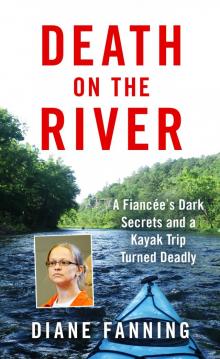 Death on the River
Death on the River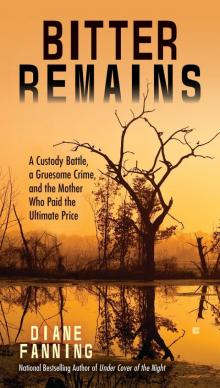 Bitter Remains
Bitter Remains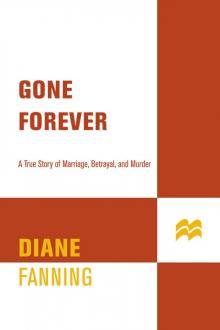 Gone Forever
Gone Forever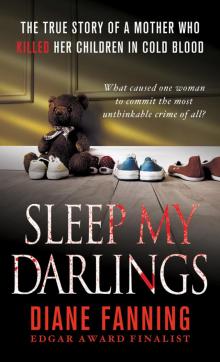 Sleep My Darlings
Sleep My Darlings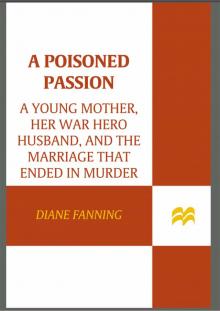 A Poisoned Passion
A Poisoned Passion Through the Window: The Terrifying True Story of Cross-Country Killer Tommy Lynn Sells (St. Martin's True Crime Library)
Through the Window: The Terrifying True Story of Cross-Country Killer Tommy Lynn Sells (St. Martin's True Crime Library)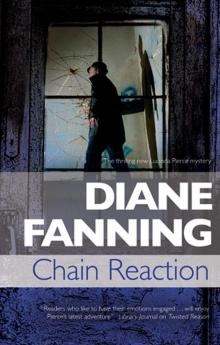 Chain Reaction
Chain Reaction Baby Be Mine
Baby Be Mine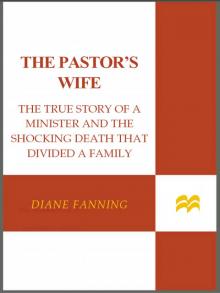 The Pastor's Wife
The Pastor's Wife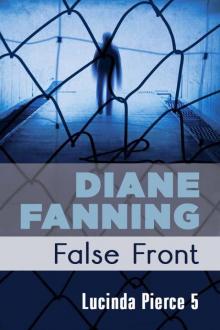 False Front (Lucinda Pierce)
False Front (Lucinda Pierce)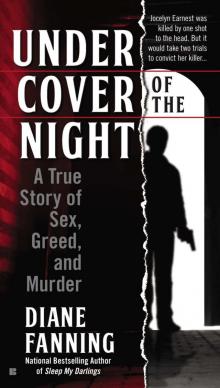 Under Cover of the Night
Under Cover of the Night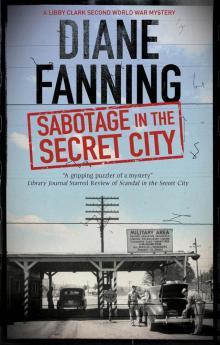 Sabotage in the Secret City
Sabotage in the Secret City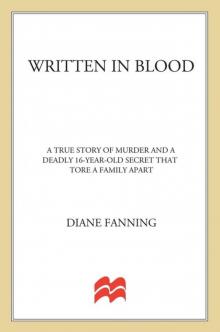 Written in Blood
Written in Blood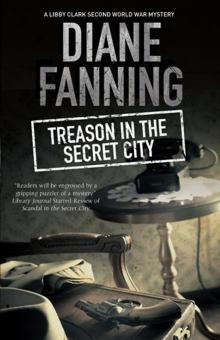 Treason in the Secret City
Treason in the Secret City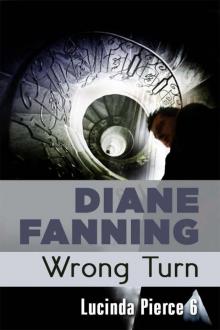 Wrong Turn
Wrong Turn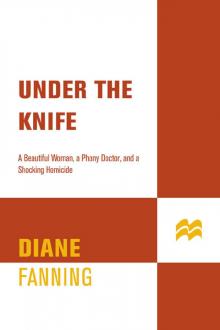 Under the Knife
Under the Knife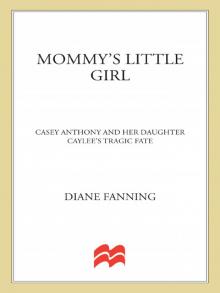 Mommy's Little Girl
Mommy's Little Girl Scandal in the Secret City
Scandal in the Secret City